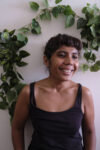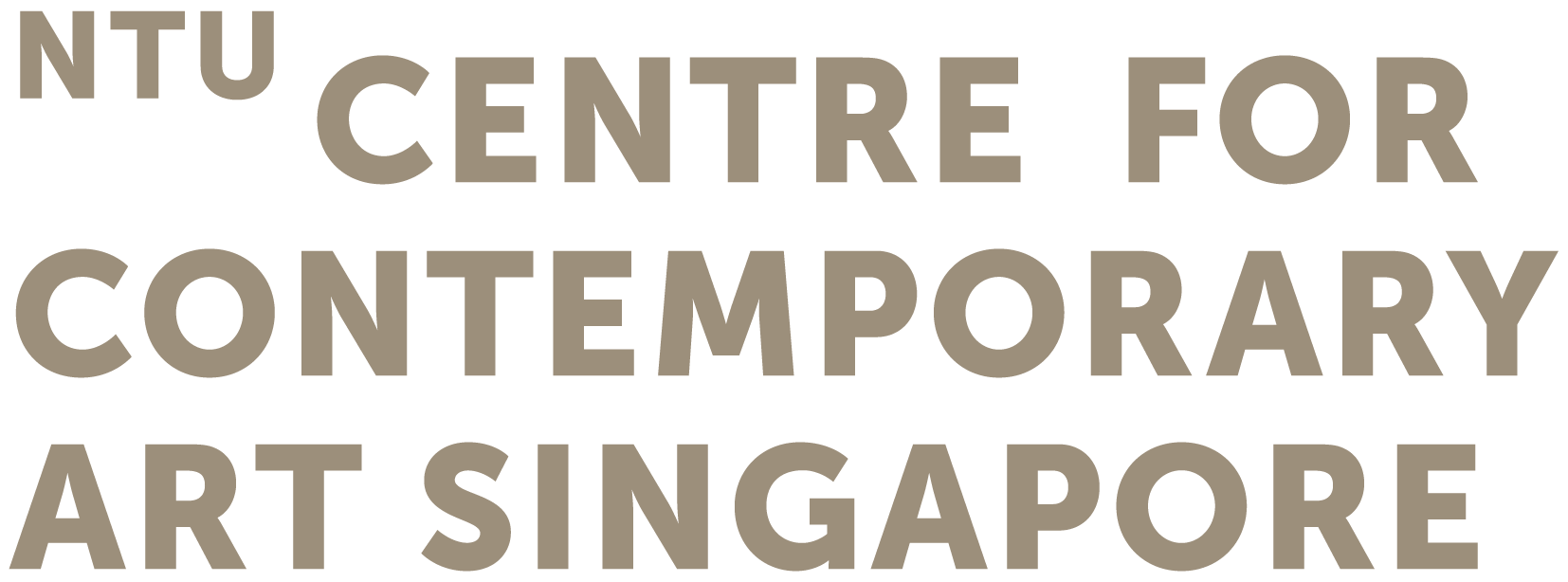
ila, bekas, 2019. Screenshot from Video. Courtesy of artist.
Projects
Turun
Turun is based on an oral history interview with Madam Salmah about her late husband's role in seeking permission from the semangat of the sea and her life after his passing. Stretching factual accounts around fictional narratives, Turun is a rumination of a past that haunts and a future that erases. In collaboration with Tysha Khan and Bani Haykal, this work is a response to Changi Beach. It is based on an actual interview of Awang Bin Osman. The characters mentioned are inspired by A. Samad Said's Lantai T. Pinkie [3].
[3] Text courtesy of the artist
BEKAS
In ‘bekas’ (2019), artist ila makes use of video to capture performance art in multiple locations, which are important for the work. Created in collaboration with Kin Chui, the short film was exhibited as part of ‘Arus Balik – From below the wind to above the wind and back again’ at NTU Centre for Contemporary Art Singapore in 2019. In the video installation, ila inscribes text on her bare body and exposes herself to the hot air, sand and sea on reclaimed lands in Singapore. The text narrated ancestral lineages from ‘Malay Singaporeans’, a colonial racial category that muddles the diverse Batak, Boyanese, Buginese, Minangkabau, and Javanese cultures that exist within it. As the body sweats in response to the humidity of the tropics, these texts similarly dissolve into illegible traces. Performed on reclaimed lands, the site-specific performance likewise reminds us of the numerous communities lost due to land expansion[2].
[2] Written text by The Versatility of Video Art in Singapore by Vivyan Yeo for Art and Market, 2022
lemas semangat
**The term semangat, which is often mistranslated from Malay as a soul of a living thing, refers to the energy that is traditionally believed to exist in all living beings. It may also inhabit or be manifested in keramat, translated as shrines, which therefore have a deep connection to their physical location; serving as vessels for its vital force. In Singapore’s rapidly shifting urban environment, however, many such keramat have disappeared, deemed less important than the perceived socioeconomic needs of the city.
This video explores these lost keramat, attempting to surface them from various ghost topographies, archival fragments, conversations, and memories. Meditating on the lemas – or weak – semangat, the artist wonders if the accumulation and distribution of the archives can have the same effect as the original keramat; if it can function as resistance against the treatment of the land and its inhabitants. “How does one locate an absence?” a voice asks early in the video. “How does one reclaim amorphous earth slipping through temporalities into ghosts and silences [...]?” [1]
[1] Written text by Berny Tan
Biography

ila. Photography credit Dewi Marie Vincoy.

